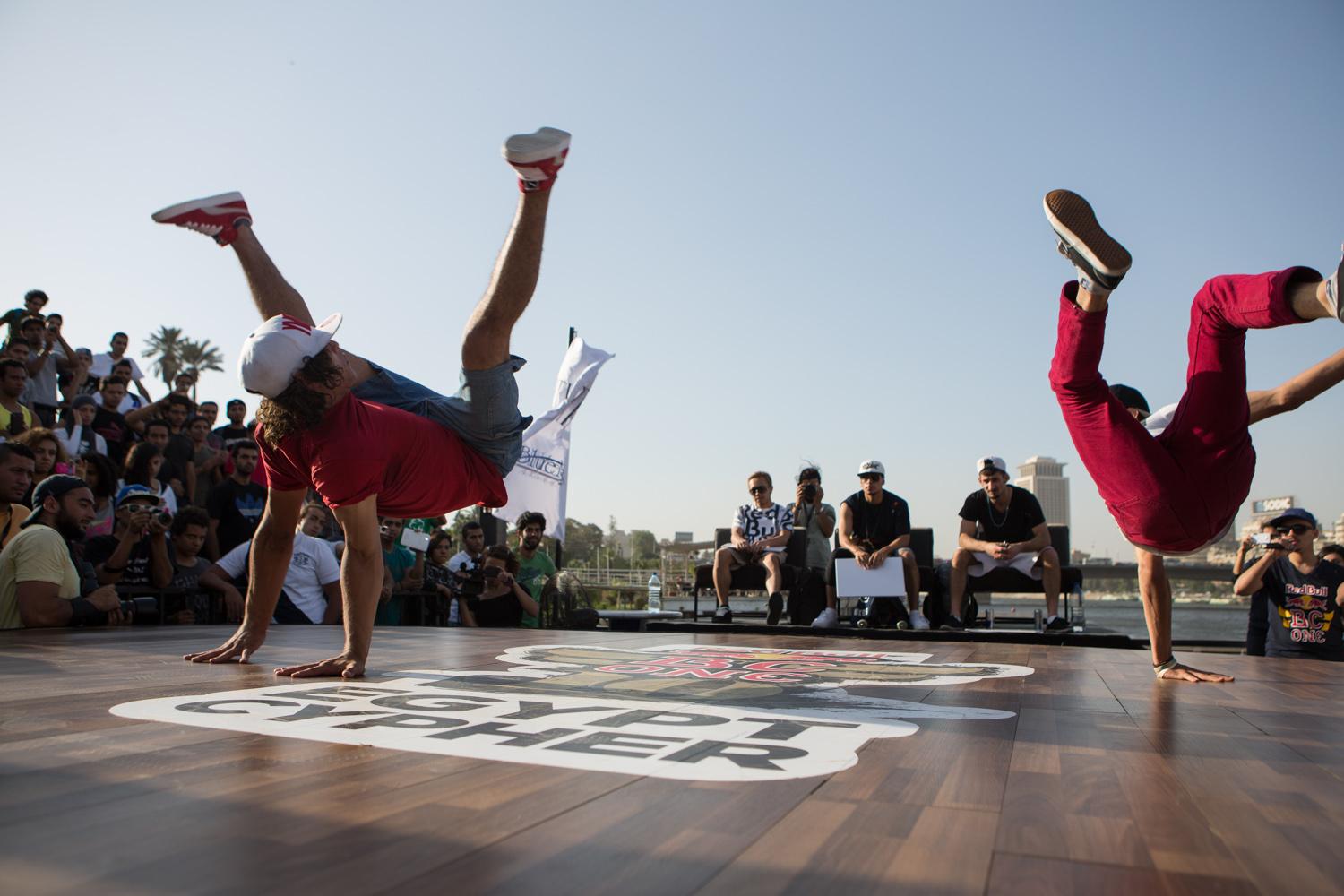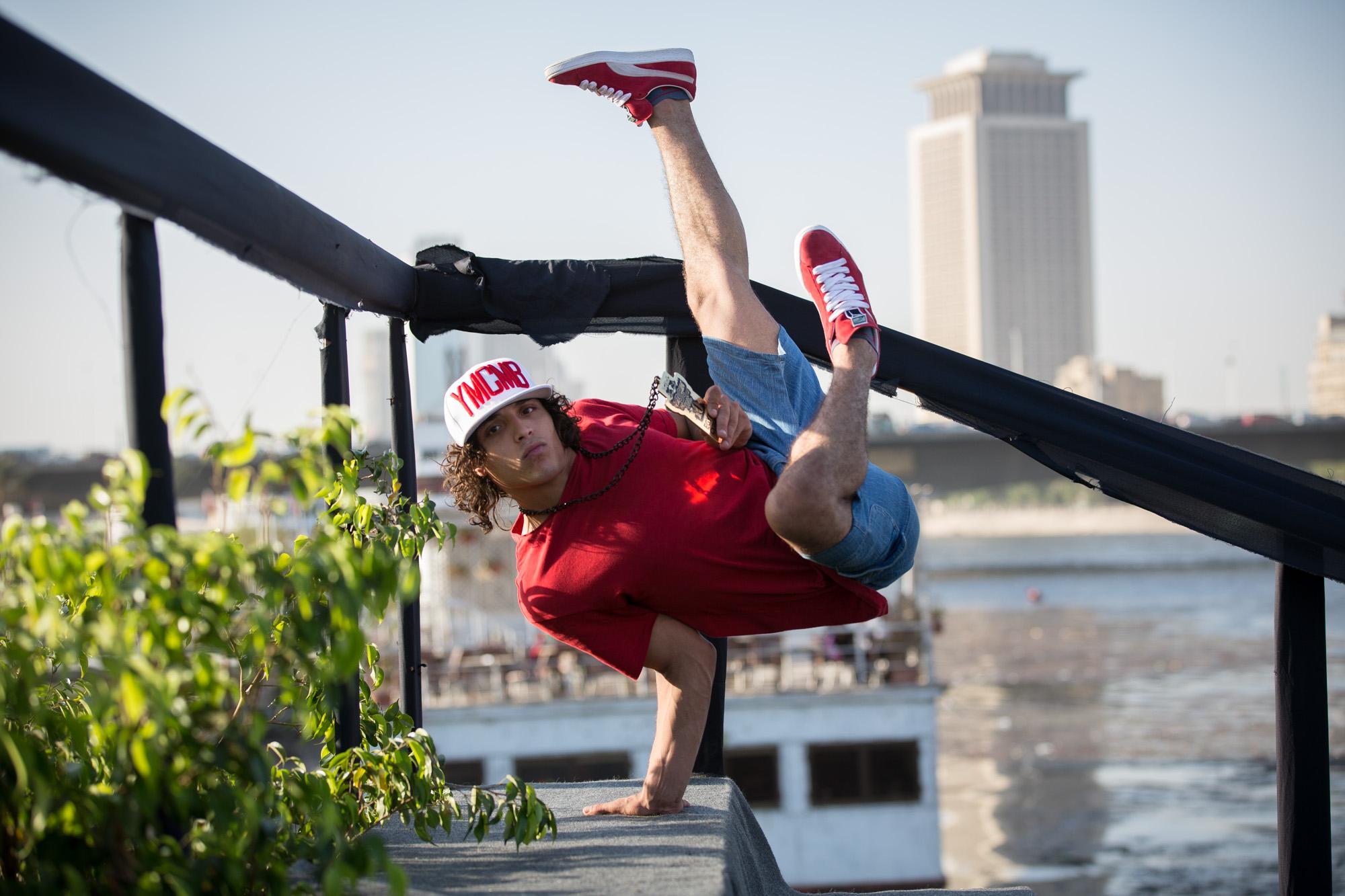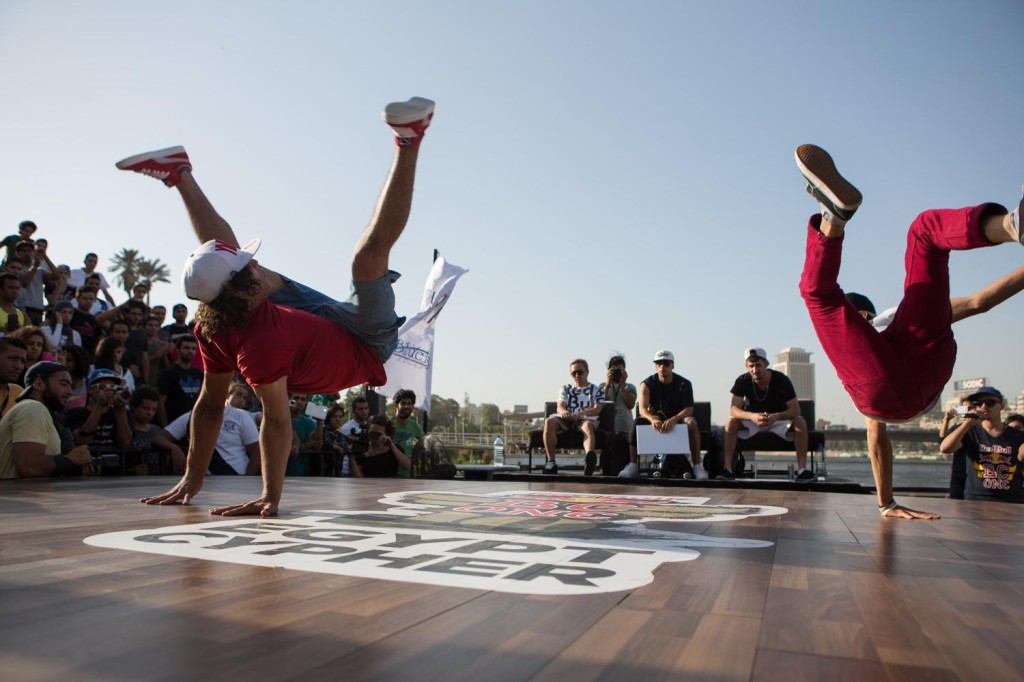
Music blasting out of secluded alleyways and concealed downtrodden studios, athletic young men head spinning and vivacious young women jack hammering. Adrenaline levels pumping and sweat beads beautifying their smiling flushed faces with each immaculately choreographed hand hop performed. The tears of frustration and defeat following the loss of a dancing battle. Spectators applauding and passers by catcalling and booing in contempt; Egypt’s side streets are daily metamorphosed into discreet, yet sleepless dance fests.
Welcome to the thrill, the drive, the dream and the ambition that is breakdancing. A mélange of color, talent, vitality, hardships and handstands.
This mystical juxtaposition of Egypt’s break-dancers’ stories was the fire that ignited the spark to create Handstand.
Handstand is a 30-minute documentary spearheaded by Red Bull Egypt – sponsor and patron of Egypt’s B-boys and girls – and orchestrated by up and coming director Ahmad Abdalla (Heliopolis, 2009, Microphone, 2011, The Good, The Bad and The Politician, 2011, Rags and Tatters, 2013). Abdalla’s crew is comprised of a group of aspiring young talents, including executive producer Hani Saqr, Editor Sara Abdallah and DOP Ayman El Noqaly. Handstand’s theme song “Mount Legacy” is the creation of rising musician Hisham Kharma.
Handstand digs out a treasure trove of talent by following the lives of some of the country’s most popular b-boys and girls. A showcase of dance routines, arduous practicing sessions and a great love and devotion for this unconventional art form. The documentary sheds light on how most of their families disapprove of what they do, and not only their families, but it has gotten as far as being kicked out of areas and break dancing being deemed haram (forbidden by Islam) by religious scholars from within the dancers’ area.
After a short glimpse into their daily lives, Handstand introduces Red Bull Egypt’s annual break dancing competition. It ends with the coronation of B-boy Klash as the winner of Red Bull Egypt BC One Cypher 2013. Unfortunately, Klash’s success in short lived as his army duty prevents him from traveling to Jordan to compete in the regional Red Bull break dancing competition. And the second runner up ends up representing Egypt in the competition instead.
Wrapping up the documentary, the b-boys and girls leave us with a message to remember.
“It is not just dancing, this is a dream and a future,” said B-Girl MZee, Handstand
“It’s not about being tall or thin or short or anything, I like to see the person in front of me free, solid, open-minded and not objective to the beliefs of others,” said B-Boy Lee-B, Handstand
To watch the documentary go to: http://www.redbullbcone.com/en/news/blog/handstand-behind-break/
To Do a Handstand or Not to Do a Handstand?

Aiming to highlight the daily lives of Egypt’s break-dancers, their trials and tribulations, this documentary’s sequence of events is derived entirely from real stories of real people. Nothing was fabricated and there was no script to follow. Opting to make do without a script definitely played in the documentary’s favor; it added a stroke of raw and unobstructed realism that makes Handstand’s stories more plausible and its characters more likeable.
Composed of a seamless weave of outdoor scenic shots, indoor shots and outdoor shots in Cairo, Alexandria and Amman, Jordan, Handstand takes you on a unique tour of Cairo and Alexandria through the eyes of its B-boys and girls.
Pigeonholing the documentary to a single genre proved fruitless. Handstand is an amalgamation of two genres: Observational and interactive documentaries. Observational refers to all the scenes and talks that were not guided by the director and the b-boys were left to steer the discussion they way they saw fit. Whereas, in other parts, Abdalla kicked started the conversation with a question to invoke new revelations from the b-boys and girls.
Relying on simple filming equipment and natural lighting, with minimal color correction in the post-production phase, Abdalla resorted to continuity editing to make the film reality a replica of the audience’s reality. Continuity editing is often used to ensure a consistent and smooth transition between scenes, and thus making it easier for viewers to comprehend and relate to the action happening on the screen in front of them. Such a technique further enhanced the reality that Handstand is aiming to showcase. Definitely a smart move.
Being the art lover that I am, I was disappointed at the documentary’s abrupt ending. Handstand became my entry ticket to vast new world; one in which I had willingly immersed myself in, only to be kicked out of it as fast as I got introduced to it. Documenting an action-packed world such as this one in 30 minutes simply does not do it justice.
I was looking to establish stronger personal connections with b-boys and girls, to know more about their struggles and hardships they face living in a conservative community with no tolerance for the unconventional. Perhaps, the director wanted to feature as many dancers and stories as possible, but I would recommend increasing the length of the documentary or shedding the light on less people. My problem is that I wanted to see more, but I couldn’t.
Despite this minor drawback, if you are an art, music and dance fan, Handstand is bound to satisfy your artistic palate.
WE SAID THIS: Don’t miss our Q&A with acclaimed director Ahmad Abdalla.



